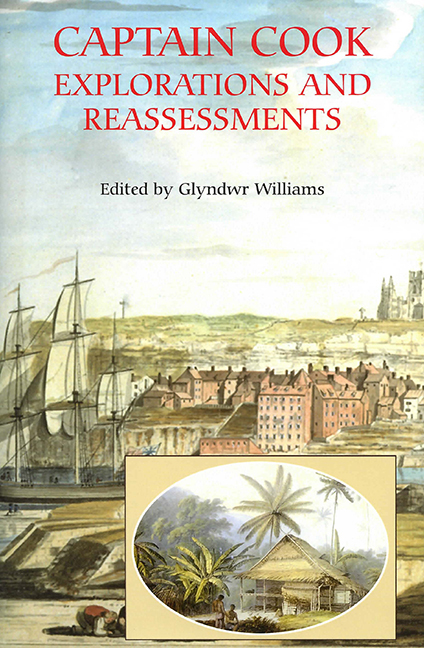Book contents
- Frontmatter
- Contents
- List of illustrations
- Contributors
- Acknowledgements
- Abbreviations
- Introduction
- Part I The Years in England
- Part II The Pacific Voyages
- Part III Captain Cook and his Contemporaries
- 8 A comparison of the charts produced during the Pacific voyages of Louis-Antoine de Bougainville and James Cook
- 9 Successors and rivals to Cook: the French and the Spaniards
- 10 Russian responses to the voyages of Captain Cook
- Part IV The Legacy of Captain Cook
- Index
8 - A comparison of the charts produced during the Pacific voyages of Louis-Antoine de Bougainville and James Cook
from Part III - Captain Cook and his Contemporaries
Published online by Cambridge University Press: 25 October 2017
- Frontmatter
- Contents
- List of illustrations
- Contributors
- Acknowledgements
- Abbreviations
- Introduction
- Part I The Years in England
- Part II The Pacific Voyages
- Part III Captain Cook and his Contemporaries
- 8 A comparison of the charts produced during the Pacific voyages of Louis-Antoine de Bougainville and James Cook
- 9 Successors and rivals to Cook: the French and the Spaniards
- 10 Russian responses to the voyages of Captain Cook
- Part IV The Legacy of Captain Cook
- Index
Summary
Introduction
European voyages to the Pacific in the eighteenth century did not always carry good quality charts, nor did all the voyagers make an effort to improve matters by drawing new ones. However, by the second half of the century, this attitude was changing and the need to possess good and accurate charts had been realised. Able cartographers now accompanied or led many of the voyages, and instruments for making accurate surveys and drawing correct charts had been developed.
Against this background, two expeditions set off from Europe in the late 1760s to explore the Pacific. The first was French, led by Louis-Antoine de Bougainville; the second was British, led by James Cook. History has remembered them very differently. The name and achievements of Cook are known throughout the world, while the name Bougainville is associated with an island and a colourful tropical flower, Bougainvillea. Few people, though, would be able to explain the reasons for those names, least of all in France where Bougainville is almost forgotten. The cartographic output of the two men and their voyages is one of several reasons for their different standing in history.
At the time the expeditions set out, European knowledge of the Pacific was limited. Scholars such as Charles de Brosses in France and Alexander Dalrymple in Britain had produced volumes that brought together all that was known from earlier voyages. Both expeditions carried a copy of de Brosses’ work, which included a copy of Giles Robert de Vaugondy's map of the Pacific, while Cook's Endeavour had on board Dalrymple's recent book with its ‘Chart of the South Pacifick Ocean’.
Objectives of the two voyages
The instructions issued to the two expeditions were quite different and show clearly the contrast in emphasis given to the production of new charts by the two governments. The British voyage of 1768 had two broad objectives: first, to transport a scientific party to Tahiti in the Pacific Ocean to observe the Transit of Venus expected in 1769, and second, to search for the Great Southern Continent.
- Type
- Chapter
- Information
- Captain CookExplorations and Reassessments, pp. 137 - 160Publisher: Boydell & BrewerPrint publication year: 2004



